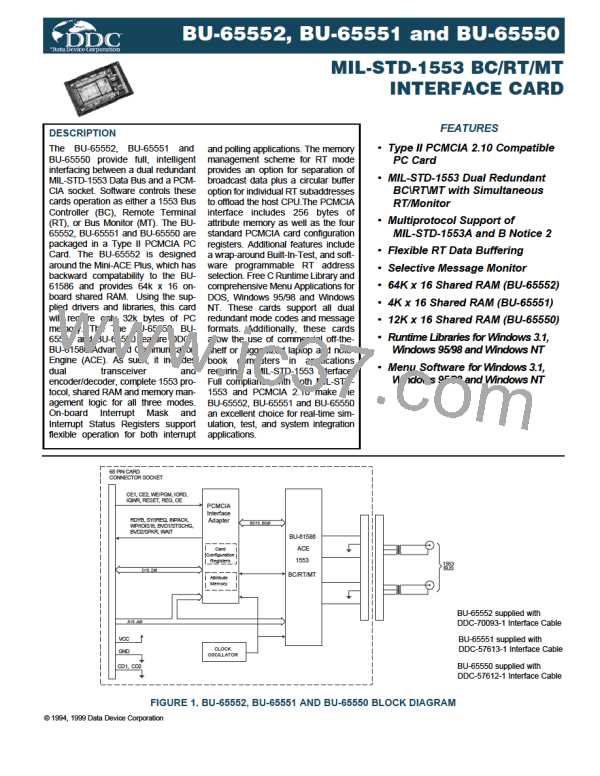FIGURE 5. MONITOR MODE WINDOW
Finally, a Stack View capability is provided for each of the modes (BC, RT, and MT). From the Stack Button, a stack file can be select-
ed, and viewed on the screen. Once the stack file is displayed, there is a capability of 'Finding' any message that was captured. The
stack file contains information pertaining to the Storage Date, time and number of messages. It also contains the data portion of the
messages, all pertinent status information, and text describing the error type.
FIGURE 6. MONITOR MODE - STACK VIEW
The stack file can be searched by message command word, any data word, or any MIL-STD-1553 error. Each of the search criteria
may be combined with a mask to allow searching for a family of command or data words. The search direction is selectable between
up and down.
ACE RUNTIME LIBRARIES
The Runtime Libraries come in both 16-bit and 32-bit versions to support 16 and 32 bit DOS and Windows. Using the Runtime Library,
applications may be created that are capable of controlling the PCMCIA card in either the BC, RT or MT mode. The newest version
of this Runtime Library supports C and Visual Basic programming. Included with the ACE Runtime Library are sample applications for
Bus Controller, Remote Terminal, and Monitor mode control. There are also sample programs for self-test and loop back tests. The
self-test program tests and reports any errors found with the major portions of the hardware including registers, RAM, interrupt gen-
eration, and the protocol unit. The loop back tests force the BU-65552|BU-65551|BU-65550 card to communicate with itself. This test
verifies the protocol unit and the transceivers to a greater degree than is performed by the Selftst2 program. The source for all of the
test and sample programs is provided free of charge. These source programs may be used as a starting point for custom applica-
tions.
The following source code represents the simplicity of writing code for the BU-6555X PCMCIA cards. This program sends 10 words
of data to RT 1 sub-address 5 on channel A, followed by a 32 word transmit to RT 6 sub-address 1 on channel 'A'. It then receives 5
8

 ETC [ ETC ]
ETC [ ETC ]